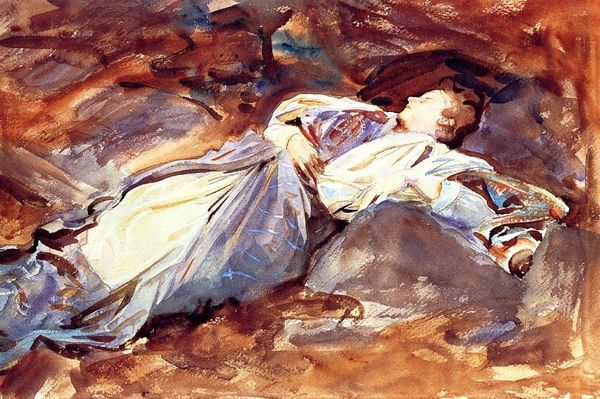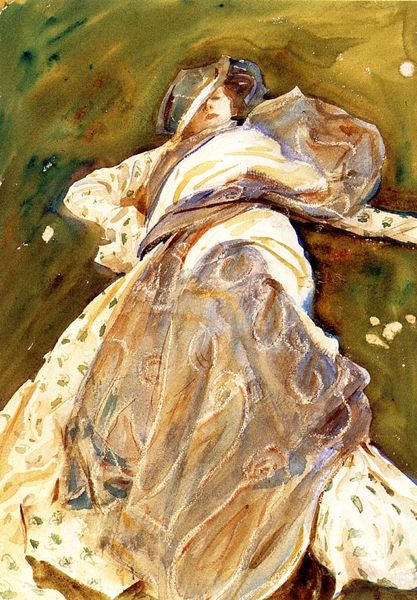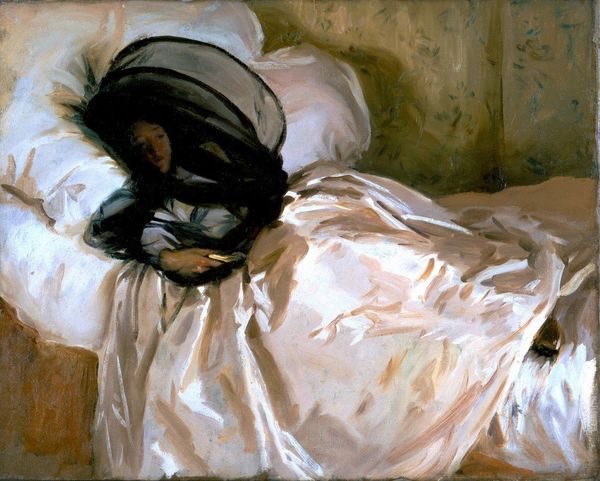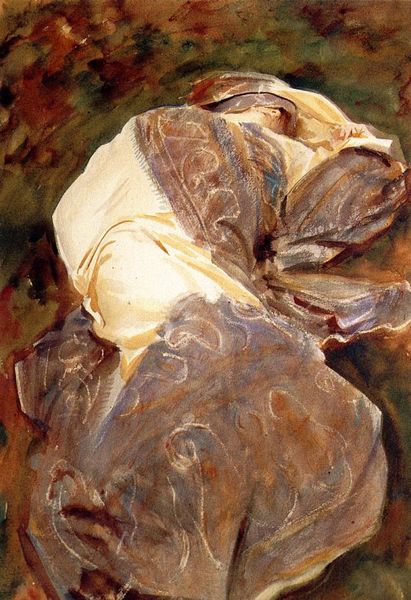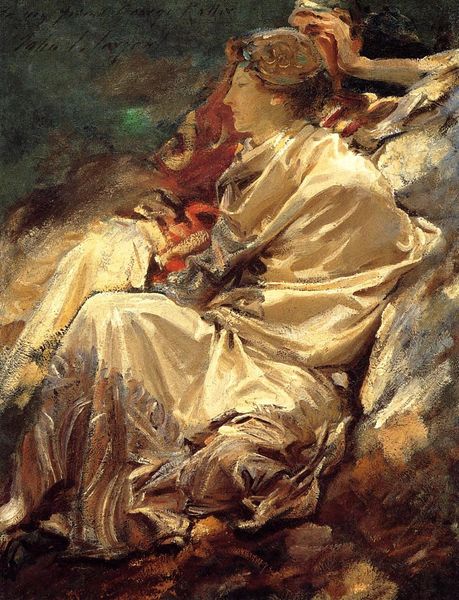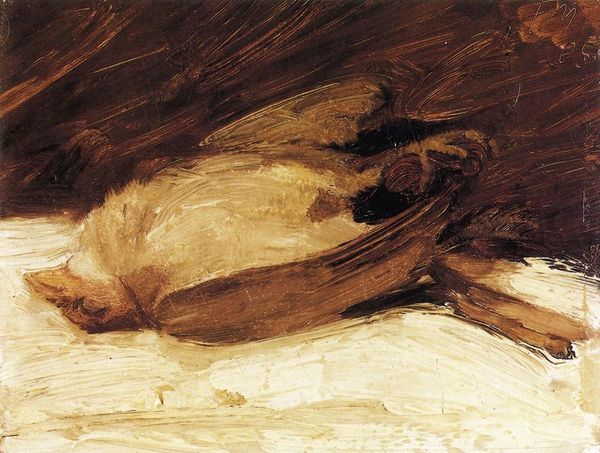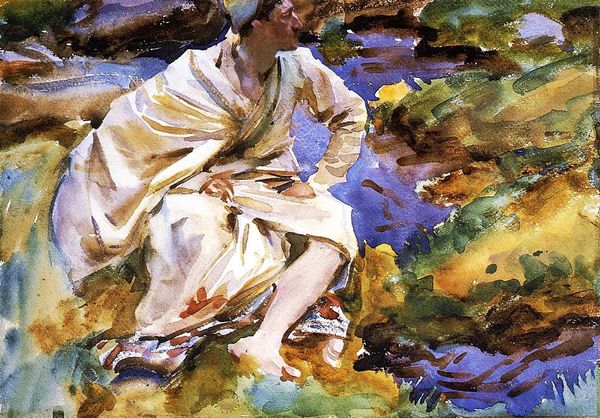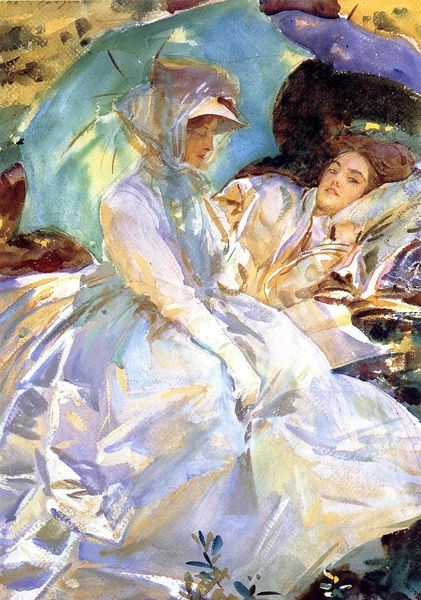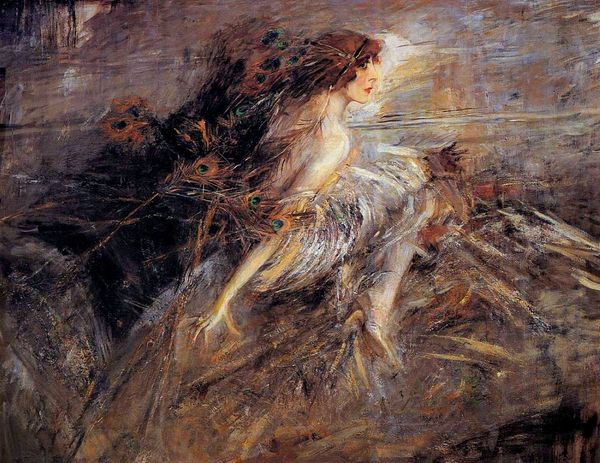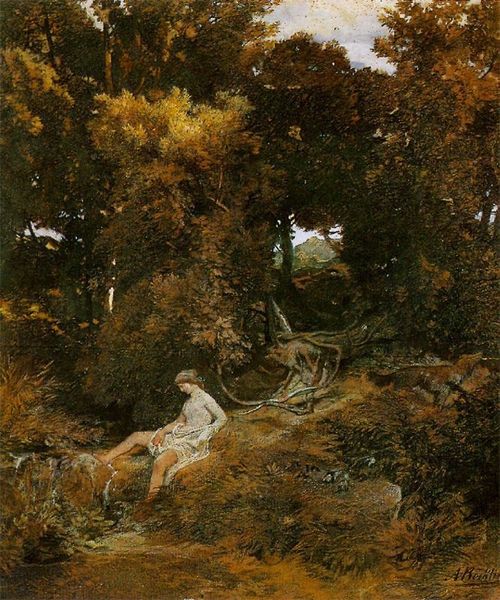
Dimensions: 73.7 x 55.9 cm
Copyright: Public domain
Editor: This is "Two White Dresses" by John Singer Sargent, painted in 1911. It looks like an oil painting done outside, en plein air. The billowing dresses create such a dreamy, almost overwhelming, effect. How do you interpret this work? Curator: The dresses become almost abstracted forms, don’t they? But notice how the white, for all its purity, reflects the environment – picking up shades of brown and gold. This resonates with ideas about women and their relationship to nature in that era. Are they independent, or reflecting something else? What stories might these garments carry with them? Editor: Stories? Like memories embedded in the fabric? Curator: Precisely! Clothes often function as silent storytellers, reminding us of rituals, social status, and even personal experiences. Consider how the texture and color can suggest feelings or moments in time. The light almost sculpts the fabric, imbuing it with life. The woman is hidden among the volumes of material – protected or confined, do you think? Editor: That's such an interesting way to consider it! I hadn't thought about the dresses themselves being active elements. Perhaps they represent both freedom and constraint, which is fascinating. I assumed they were mere decoration. Curator: Exactly! It’s not merely a pretty picture; it uses clothing as cultural signifiers. Art invites deeper readings when we question the symbolic resonance of even the seemingly mundane. We could look into the fashions worn by Sargent’s female sitters – or whether he painted any men reclined on similar piles of clothes? Editor: It definitely prompts me to examine art more closely, paying attention to all the embedded clues. I feel like I'm seeing with new eyes. Curator: And now those dresses might appear completely changed.
Comments
No comments
Be the first to comment and join the conversation on the ultimate creative platform.
